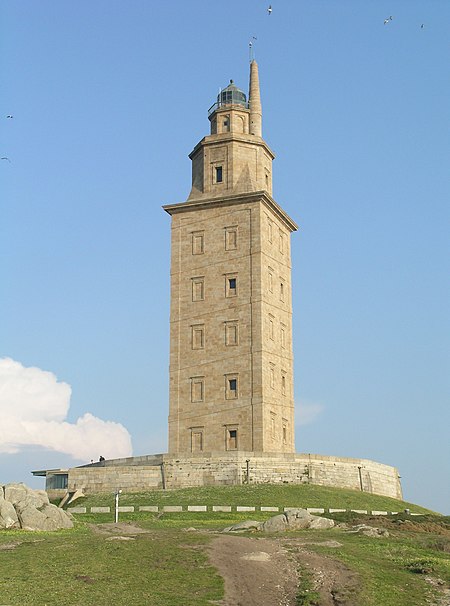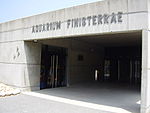Tower of Hercules

The Tower of Hercules (Spanish: Torre de Hércules) is the oldest extant lighthouse known. It has an ancient Roman origin on a peninsula about 2.4 km (1.5 mi) from the centre of A Coruña, Galicia, in north-western Spain. Until the 20th century, it was known as the Farum Brigantium. The Latin word farum is derived from the Greek Φάρος, Pharos, for the Lighthouse of Alexandria. The structure stands 55 metres (180 ft) tall and overlooks the North Atlantic coast of Spain. It was built in the 1st century and competently renovated in 1791. There is a sculpture garden featuring works by Pablo Serrano and Francisco Leiro. The Tower of Hercules is a National Monument of Spain, and has been a UNESCO World Heritage Site since 27 June 2009. It is the second-tallest lighthouse in Spain, after the Faro de Chipiona.
Excerpt from the Wikipedia article Tower of Hercules (License: CC BY-SA 3.0, Authors, Images).Tower of Hercules
Paseo dos Menhires, A Coruña Durmideiras
Geographical coordinates (GPS) Address Nearby Places Show on map
Geographical coordinates (GPS)
| Latitude | Longitude |
|---|---|
| N 43.385833333333 ° | E -8.4063888888889 ° |
Address
ENIL Torre de Hércules
Paseo dos Menhires
15002 A Coruña, Durmideiras
Galicia, Spain
Open on Google Maps










